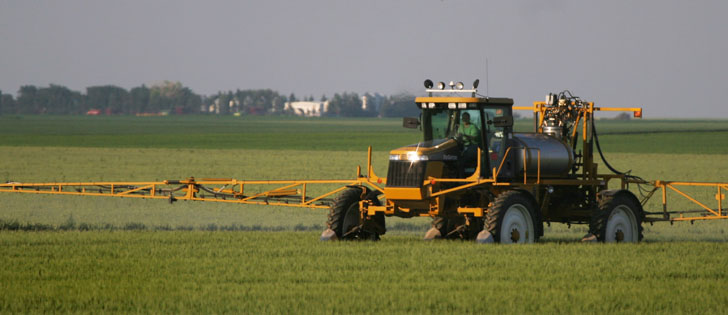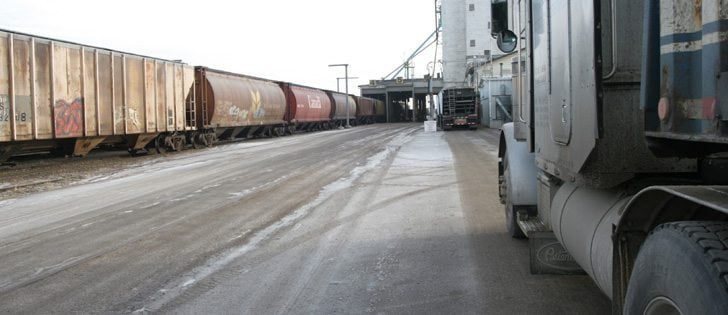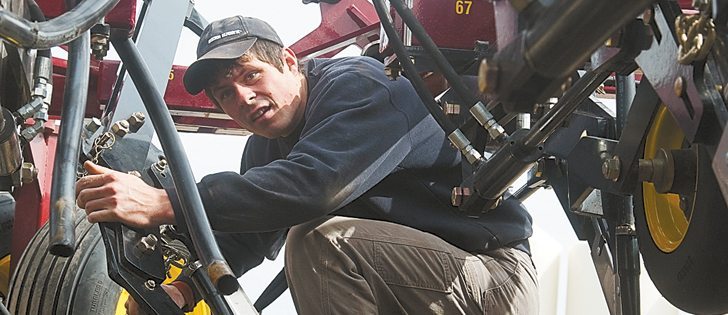If you think farmers in supply management are coddled in a socialist-styled cocoon and haven’t a clue about the real world of business, imagine being in Jim Burrows’ shoes at the start of this decade.
“Back in 2000-01, we were a good company with a solid base trying to position ourselves to be flexible and ready to grab any opportunity that might come along,” says Burrows, a Nova Scotia dairy farmer and chair of Scots- burn Dairy, Atlantic Canada’s largest farmer-owned dairy processor.
Read Also

Canadian Food Inspection Agency extends chronic wasting disease control program consultation deadline
Date extended for consultation period of changes to CWD program
“Then all of a sudden, the doors blew wide open and three big opportunities came our way in just six months.”
One was a chance to buy a competitor’s ice cream division, another to produce privatelabel ice cream products for a national chain and then an offer to sell an aging, nearly obsolete ice cream plant that meant building a brand new state-of-the-art facility.
The details of those opportunities are less important than their scale – each was a big mouthful. Collectively, they would require capital spending in the tens of millions of dollars and severely tax the dairy’s limited head office resources.
Others in that position would have taken on one, maybe two, of those projects, but the directors of the Scotsburn board took a deep breath and said yes to all three.
“We certainly had to scramble that year. It was a challenge for the board and our senior management and I guess you could say it was quite a gamble,” he says.
“But we certainly fulfilled our goal of becoming quick and flexible in order to grab opportunities when they came along. Now that decision is paying dividends.”
Today, the co-op from tiny Scotsburn, N.S., which is owned by about 120 dairy farmers, has more than $250 million in annual sales, 700 employees, 10 processing facilities and 31 distribution centres in Nova Scotia, New Brunswick and Newfoundland.
The rapid expansion nine years ago was a gutsy call for a group of farmers who live, according to their critics, in a fantasy world where they’re guaranteed a profit on every litre of milk they produce.
But Burrows argues that Scotsburn’s entrepreneurial drive stems from the business lessons all dairy farmers in the co-op have learned on their own farms.
“You hear these comments all the time, but anybody in the industry knows that supply management is geared so only a certain percentage can make a decent profit,” Burrows says.
“That’s why you’ve seen the number of producers fall so dramatically over the years. If you want to survive, you’ve got to be one of the good ones.”
Burrows hastens to add that Scotsburn’s managers run the business. The board’s job is to set policies and goals that allow the company to grow and evolve.
“If Scotsburn had stayed the way it was 20 years ago, we’d be out of business.”
Burrows says frozen food and yogurt distribution were about a quarter of Scotsburn’s revenues when he joined the board in 1995. Now the big chains handle that internally and much of the business is gone.
Still, growth has a price.
“If you look at the income and expense statements for the period 1995 to 2003, you’ll see the profits for a company our size were very low,” says the 51-year-old who has operated a dairy at Green Oaks, N.S., for nearly 30 years.
“But our shareholders are long-term focused. If we can show them that what we’re doing has a long-term payback, they are behind us. That’s totally different from when you’re listed on a stock exchange and driven by quarterly results.”
One of those farmer-shareholders is Jack Thomson of Antigonish, N.S.
“It’s great to own your own processor and it’s a big part of our farm’s success,” he says.
“Given the political and economic climate in agriculture these days, any time farmers can get together and work collaboratively, it’s a positive.”
Thomson points with pride to a decision to build a capital reserve of more than $10 million solely to fund future expansion.
“We can’t set the agenda on when opportunities will arise but we have to be financially strong enough to take advantage when they do arise,” he says.
Thomson also likes that through the co-op, his milk has a brand that is recognized for its quality and the fact that it comes from a locally owned business. Of course, there are also the dividend cheques, which in good years can amount to as much as five percent of a farm’s milk sales.
Those cheques are automatically re-invested in shares, so many of the shareholders now have stakes worth several hundred thousand dollars, all earned in one of the most competitive sectors in Canadian business.
Glenn Cheater is editor of the Canadian Farm Manager, the newsletter of the Canadian Farm Business Management Council. The newsletter as well as archived columns from this series can be found at www.farmcentre.com.













